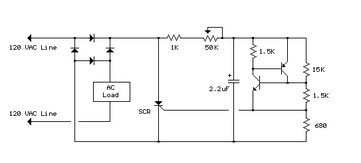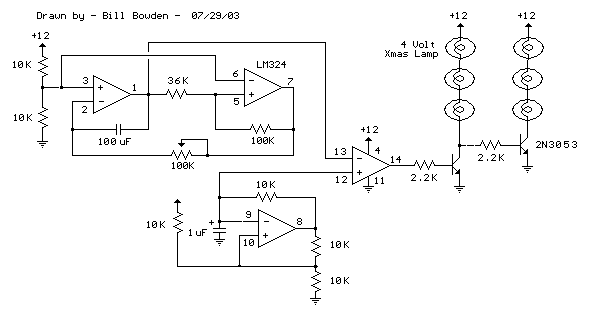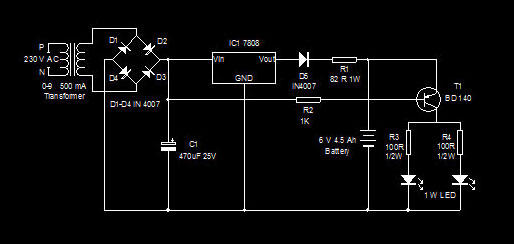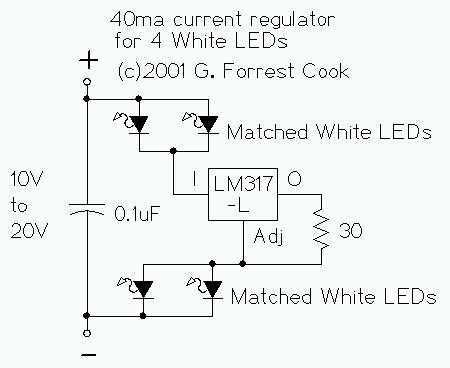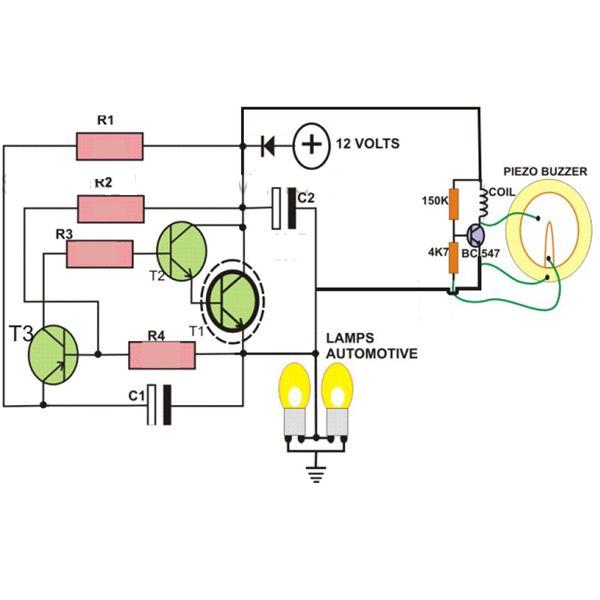
Backup Lamp
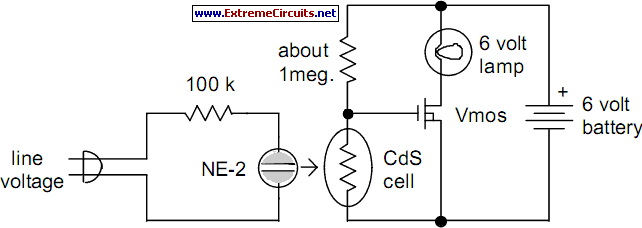
There are several situations where a power failure can be particularly challenging to manage, especially in the bathroom. This compact circuit is designed to be cost-effective, particularly beneficial during a shower. The backup lamp remains off as long as light reaches the CdS photocell from either the NE-2 or ambient room light. Therefore, if a power outage occurs at night, the lamp will illuminate. The 6-volt lamp should be positioned away from the photocell to achieve maximum brightness, and the 1-megohm resistor can be adjusted to modify sensitivity. Most N-channel power FETs, such as the VN-67, will function adequately if they activate effectively at 6 volts. The NE-2 can be placed directly above the photocell, ensuring that the leads do not contact other conductors. It is crucial to insulate the NE-2 circuit for safety; implementing a double-insulation strategy is advisable. Insulate the 120-volt circuit to prevent exposure of bare conductors, and mount the entire assembly within an insulating enclosure. Two insulation failures must occur for the device to present a shock hazard. For enhanced safety, plug the device into an outlet equipped with a ground-fault protector. An alternative approach involves omitting the NE-2 circuit and incorporating a power switch in series with the battery. While this design is safe and portable, it must be manually turned off at night when not in use. Additionally, commercially available neon night lights can replace the NE-2, as they do not burn out like 7-watt incandescent bulbs, thus preventing unnecessary battery drain. The standby lamp can be constructed within an empty jar, with the photocell shielded from the lamp. Position the jar near the night light to deactivate the standby lamp in darkness. This version can be easily transported like an electronic candle, as the nightlight is not mechanically connected. It is important to consider that if this device is intended for bathroom use, a wet individual may be holding the lamp when power is restored. For use in bathrooms, children's rooms, and other hazardous areas, it is recommended to choose the commercial nightlight or on-off switch option or to integrate the circuit into an overhead light fixture, keeping it out of reach.
This circuit serves as a practical solution for ensuring safety and convenience during unexpected power outages, particularly in locations where illumination is essential. The use of a CdS photocell allows for automatic activation of the lamp in low-light conditions, providing immediate visibility during emergencies. The configuration of the components, including the NE-2 indicator and the N-channel FET, is critical for the reliable operation of the circuit. The NE-2 serves as a visual indicator, while the FET acts as a switch that controls the lamp based on the photocell's readings.
The choice of a 6-volt lamp is significant, as it balances brightness and power consumption, ensuring that the device remains energy-efficient. The adjustable sensitivity through the resistor provides flexibility, allowing users to tailor the circuit's response to their specific environment. The emphasis on insulation and safety measures is paramount, especially in wet environments like bathrooms, where the risk of electric shock is heightened. The recommendation for a ground-fault protector further enhances user safety, ensuring that any faults in the circuit are mitigated promptly.
The design's versatility, allowing for various implementations such as using a jar for portability or integrating into existing fixtures, caters to different user needs and preferences. By considering these factors, the circuit not only addresses the immediate need for light during power outages but also prioritizes safety and ease of use in potentially hazardous situations.There are a few situations when a power failure is particularly difficult to handle. Some of these circumstances occur in the bathroom. This little circuit will pay for itself many times over the first time it is used, especially if you are in the shower. This back-up lamp stays off as long as light falls on the CdS photocell from either the NE-2 or from room ambient light. So, if the power fails at night, the lamp will light. The 6 volt lamp should be directed away from the photocell to achieve full brightness and the 1 meg. resistor may be varied to adjust the sensitivity. Most N-channel power fets such as the VN-67 will work if they turn on well with 6 volts. The NE-2 may be placed directly on top of the cell but make sure the leads do not touch other conductors. The NE-2 circuit must be well insulated for safety. A double-insulation scheme is a good idea. Insulate the 120 volt circuit so that no bare conductors are exposed then mount the entire device in an insulating enclosure.
Two insulation failures must occur before the device becomes a shock hazard. Plug the device into an outlet with a ground-fault protector for additional safety. A simpler approach is to leave out the NE-2 circuit and add a power switch in series with the battery. This design is safe and portable but it must be turned off at night when not in use. Alternately, neon night lights are available which could be used in place of the NE-2. These little round night lights won`t burn out like the 7-watt incandescent bulbs which would result in unnecessary battery drain.
The standby lamp may be built into an empty jar with the photocell shielded from the lamp. Place the jar close to the night light to turn off the standby lamp when the room is dark. This version may be freely carried away like an electronic candle since the nightlight is not mechanically connected. Remember, if this device is built for a bathroom, a wet person may be holding this lamp when the power comes back on!
For bathroom, kids` room and other dangerous locations, go with the commercial nightlight or on-off switch version or build the circuit into the overhead light fixture where it is out of reach. 🔗 External reference
This circuit serves as a practical solution for ensuring safety and convenience during unexpected power outages, particularly in locations where illumination is essential. The use of a CdS photocell allows for automatic activation of the lamp in low-light conditions, providing immediate visibility during emergencies. The configuration of the components, including the NE-2 indicator and the N-channel FET, is critical for the reliable operation of the circuit. The NE-2 serves as a visual indicator, while the FET acts as a switch that controls the lamp based on the photocell's readings.
The choice of a 6-volt lamp is significant, as it balances brightness and power consumption, ensuring that the device remains energy-efficient. The adjustable sensitivity through the resistor provides flexibility, allowing users to tailor the circuit's response to their specific environment. The emphasis on insulation and safety measures is paramount, especially in wet environments like bathrooms, where the risk of electric shock is heightened. The recommendation for a ground-fault protector further enhances user safety, ensuring that any faults in the circuit are mitigated promptly.
The design's versatility, allowing for various implementations such as using a jar for portability or integrating into existing fixtures, caters to different user needs and preferences. By considering these factors, the circuit not only addresses the immediate need for light during power outages but also prioritizes safety and ease of use in potentially hazardous situations.There are a few situations when a power failure is particularly difficult to handle. Some of these circumstances occur in the bathroom. This little circuit will pay for itself many times over the first time it is used, especially if you are in the shower. This back-up lamp stays off as long as light falls on the CdS photocell from either the NE-2 or from room ambient light. So, if the power fails at night, the lamp will light. The 6 volt lamp should be directed away from the photocell to achieve full brightness and the 1 meg. resistor may be varied to adjust the sensitivity. Most N-channel power fets such as the VN-67 will work if they turn on well with 6 volts. The NE-2 may be placed directly on top of the cell but make sure the leads do not touch other conductors. The NE-2 circuit must be well insulated for safety. A double-insulation scheme is a good idea. Insulate the 120 volt circuit so that no bare conductors are exposed then mount the entire device in an insulating enclosure.
Two insulation failures must occur before the device becomes a shock hazard. Plug the device into an outlet with a ground-fault protector for additional safety. A simpler approach is to leave out the NE-2 circuit and add a power switch in series with the battery. This design is safe and portable but it must be turned off at night when not in use. Alternately, neon night lights are available which could be used in place of the NE-2. These little round night lights won`t burn out like the 7-watt incandescent bulbs which would result in unnecessary battery drain.
The standby lamp may be built into an empty jar with the photocell shielded from the lamp. Place the jar close to the night light to turn off the standby lamp when the room is dark. This version may be freely carried away like an electronic candle since the nightlight is not mechanically connected. Remember, if this device is built for a bathroom, a wet person may be holding this lamp when the power comes back on!
For bathroom, kids` room and other dangerous locations, go with the commercial nightlight or on-off switch version or build the circuit into the overhead light fixture where it is out of reach. 🔗 External reference
